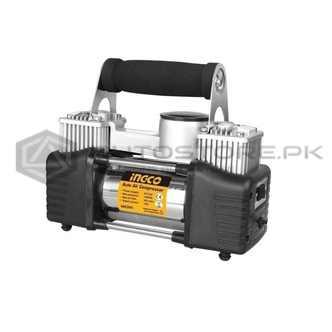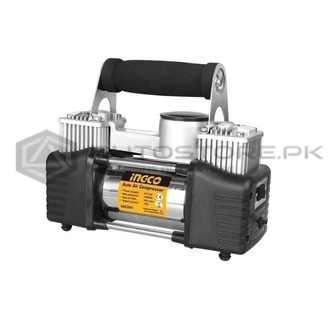An air pump on a car typically refers to the component that is responsible for injecting fresh air into the vehicle's exhaust system. It is often part of the emissions control system and is specifically designed to reduce harmful emissions, such as nitrogen oxides (NOx), in the vehicle's exhaust gases.

The primary purpose of an air pump is to introduce additional oxygen into the exhaust stream, which facilitates the more efficient combustion of any unburned fuel and helps reduce emissions. This process is known as "secondary air injection." The air pump is usually controlled by the vehicle's engine control unit (ECU) and activates during cold starts or under specific driving conditions when additional oxygen is needed to improve the efficiency of the catalytic converter and reduce emissions.
Air pumps can come in different designs, but they typically consist of an electric pump or a belt-driven pump that draws in outside air and injects it into the exhaust manifold or directly into the exhaust system. This extra oxygen aids in the combustion of unburned hydrocarbons, which can be harmful to the environment.The use of air pumps is more common in older vehicles with less advanced emissions control systems. Modern cars often use more sophisticated technologies like catalytic converters with integrated air injection to achieve cleaner emissions without the need for a separate air pump.
A car air pump, in the context of a vehicle, typically refers to a device designed to inflate and maintain the air pressure in the tires. It is also known as a tire inflator or a portable air compressor. Car air pumps are a valuable tool to have in your vehicle for various reasons, including:
1. Tire Inflation:
The primary purpose of a car air pump is to inflate and maintain the correct air pressure in your vehicle's tires. Proper tire pressure is essential for safe and efficient driving, as it affects handling, fuel efficiency, and tire wear.
2. Emergency Use:
Car air pumps are particularly useful in emergencies when you encounter a flat tire or low tire pressure on the road. They allow you to inflate the tire enough to reach a service station or a safer location.
3. Convenience:
Car air pumps are convenient for maintaining the correct tire pressure without visiting a gas station or auto shop. Regularly checking and adjusting tire pressure can extend the life of your tires and improve fuel economy.
4. Versatility:
Many car air pumps come with various nozzles and adapters, making them suitable for inflating not only car tires but also bicycle tires, sports equipment, inflatable toys, and more.
Car air pumps can be powered in different ways, including:
- 12-Volt DC: These are typically powered through the vehicle's 12-volt power outlet (cigarette lighter). They are portable and can be used anywhere your vehicle can reach.
- Battery-Powered: Some air pumps come with built-in rechargeable batteries, allowing you to use them without needing the vehicle's power source.
- AC-Powered: These air pumps are powered by a standard electrical outlet and are typically not as portable as the other options. They are commonly used in garages or workshops.
Car air pumps vary in terms of their features and capabilities. Some are basic and designed solely for tire inflation, while others may include digital displays, preset pressure settings, automatic shut-off functions, and LED lights for nighttime use.
It's important to regularly check and maintain the tire pressure in your vehicle to ensure safety and optimal performance. A car air pump can be a valuable tool to have on hand for these purposes, especially when traveling or in emergency situations.


